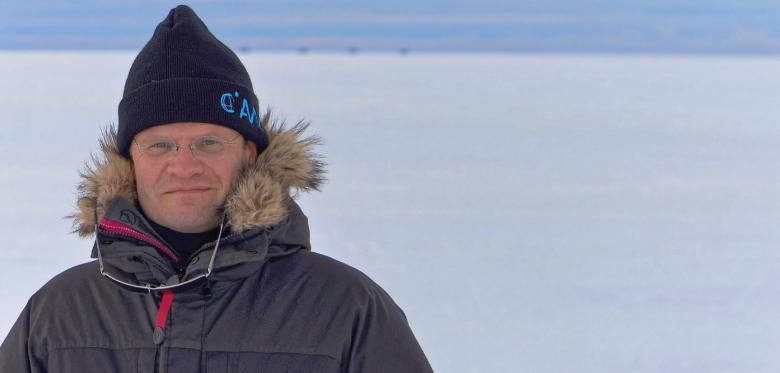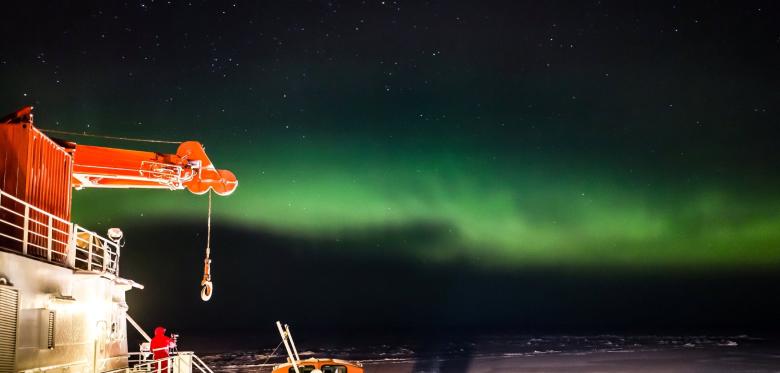
From February to June, the Arctic is actually inaccessible. Now scientists are supposed to research climate change there – and let their ship drift through the ice without a drive. Armed guards will protect the camp.
M arkus Rex has been in the Arctic many times – so often that he can not name the exact number of trips. But the expedition, which will lead the climatologist to the North Pole in September, is unique: Together with an international research team, he will be included on board the “Polarstern” of the Alfred Wegener Institute (AWI) in Bremerhaven . The research vessel will be drifting with the ice for a year – a mammoth project that did not exist in this form yet. “I’ve been through a lot of expeditions, but it’s unparalleled,” says Rex, who leads the trip.
From February to June, the central Arctic is inaccessible because the ice is too thick even for icebreakers. Enclosed by the ice, the “Polarstern” is supposed to drift over the pole cap without any own drive – following the example of the journey of the Norwegian Fridtjof Nansen with the sailing ship “Fram” some 125 years ago.
The aim of the 120 million Euro project “Mosaic” is to understand climate change more precisely. The Arctic is considered an early warning system for climate change, it has been warming in the past decades, the strongest of all regions of the earth.
Unlike the “Fram”, the “Polarstern” will not be on its own. It is supplied by other icebreakers in the first and last sections. “We need fresh food and fuel supplies,” says expedition leader Rex. The propeller will be standing most of the time. In order to provide the “Polarstern” with heat and electricity, the engine will still be on.

Guard stand in the “Zappendustern”
First, the ship travels from Norway along the Siberian coast and then poleward into the ice. At the finish, the team has two weeks to set up a camp on the ice. At several stations measurements are to be made in seawater, in ice and in the atmosphere. During the build-up phase, there are just four hours of twilight during the day. “That gets really hectic. From the second half of October it will be zappenduster, “says Rex.
The polar night is just one of many challenges that need to be considered in advance. For months, the AWI preparations are in full swing. Contingency plans must also be made, for example if the pack ice breaks up while scientists are standing on it. “Then it’s time to get the people to safety, then the equipment,” says AWI engineer Bjela König, who is responsible for the risk assessment.
Polar bears could also be dangerous . Armed guards are deployed to enable researchers to work safely on the ice. “We need to clarify exactly how many teams can be protected at the same time,” says König. The work of the guards is made more difficult by the darkness and the not uncommon dense fog in the Arctic.
Scientists take turns
Meanwhile AWI ice specialist Marcel Nicolaus is coordinating the arrangement of the stations on the ice. “The number exceeds every previously known dimension of other expeditions,” says the physicist. So that the scientists do not come into the enclosure, the plaice must be divided exactly.

At the end of 2019, Rex wants to go back to Norway with other scientists and crew members with the escort ship “Admiral Makarow”, and other researchers will come aboard again. All expedition participants only stay for two to three months at a time. On further journeys in 2020, Rex will be back on the “Polarstern”.
In between, a runway is to be prepared on the then thick pack ice with snow groomers. In April 2020, the first supply aircraft should be able to land when icebreakers will not be able to get through the pack ice. If the participants do not succeed in preparing a stable runway, long-range helicopters are used.
It is possible to build a camp together with a landing runway, because the ice together with the “Polarstern” drifts southwards. “Our environment travels with us,” explains expedition leader Rex. Until the melting period starts again in June 2020. Then the “Polarstern” between Greenland and Spitsbergen is spit out again – and the evaluation of the many data obtained can begin.

